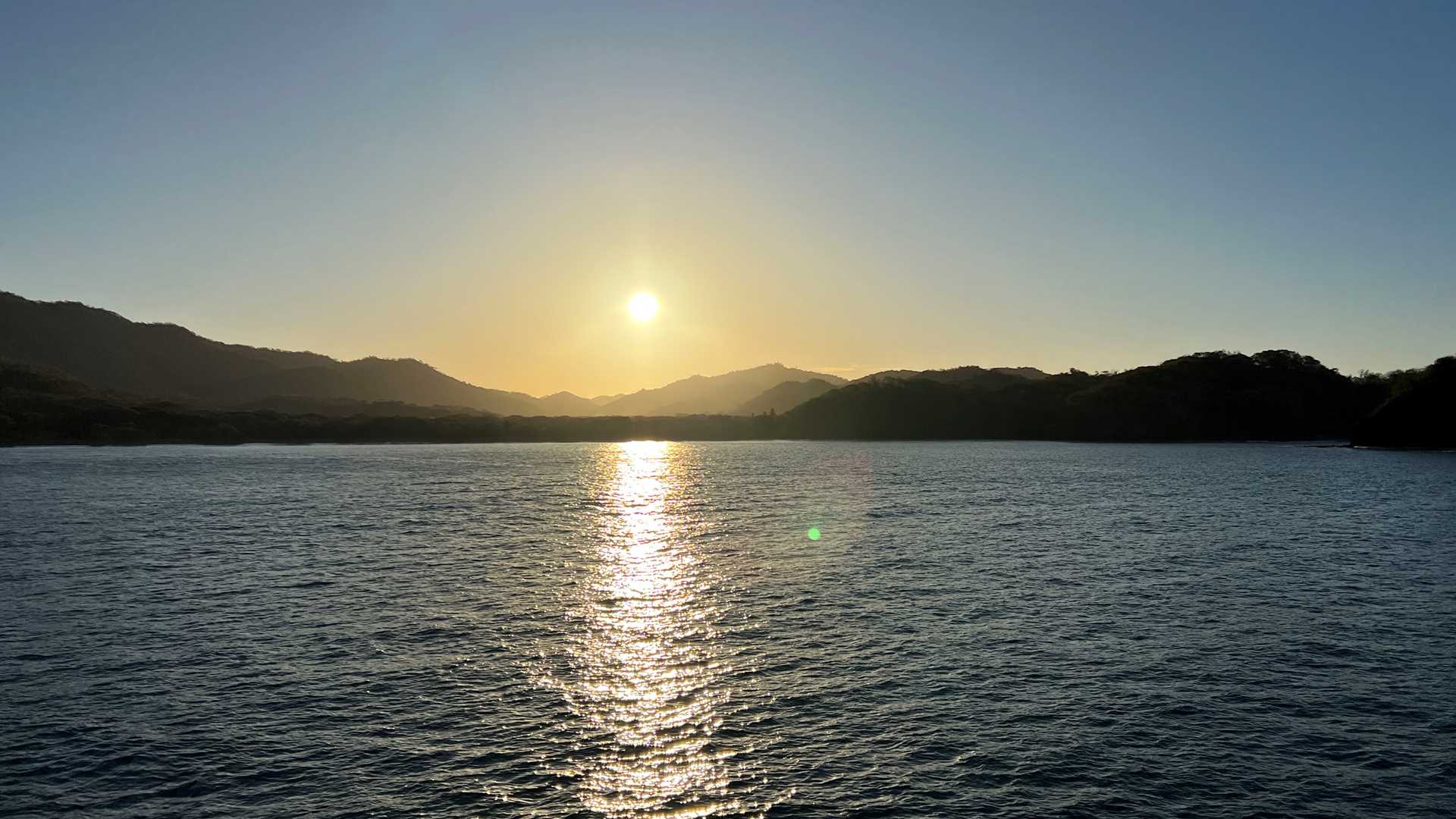We awoke to a beautiful sunrise over the Pacific Ocean on our first day exploring the Guanacaste region of Costa Rica, located on the northwest peninsula of the country. Guanacaste is a tropical dry forest, and we are visiting during the dry season. The coast is lined with a patchwork of forest, from lush green plants to deciduous trees that have lost their leaves and flowers. This morning, some of us took to the ocean to snorkel the rocky reefs of Punta Zapotal, while others went to shore to hike. All of us enjoyed the wildlife, from the tropical fish of the Pacific to the howler monkeys in the forest.
In the afternoon, we explored by Zodiac, entering a beautiful mangrove forest. Mangroves are an incredibly important nearshore habitat, providing safe havens for juvenile fish and sharks, as well as nesting and feeding habitats for birds. After enjoying the sunny heat of the tropics, we returned to National Geographic Quest for ceviche and beverages as we watched the sunset. It was a great start to our trip in Costa Rica!







